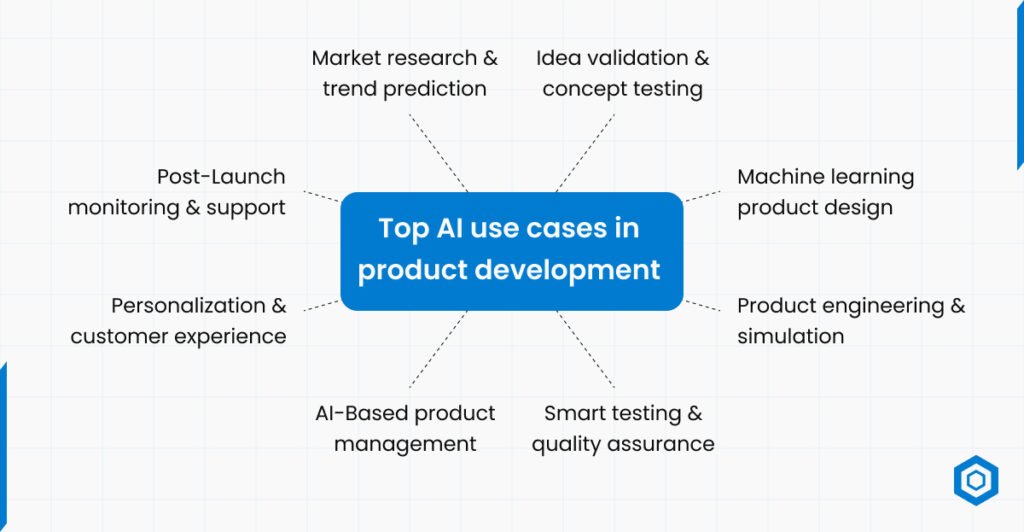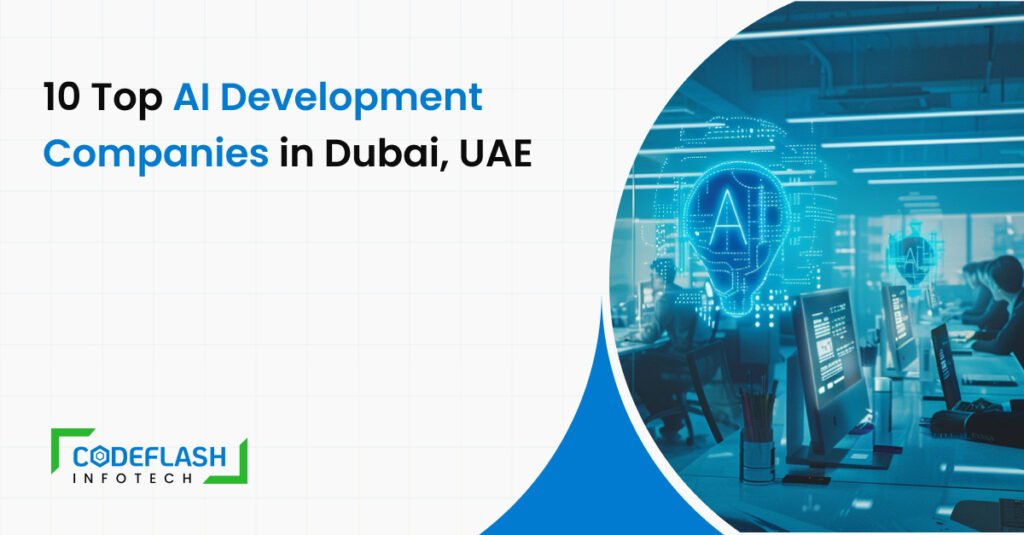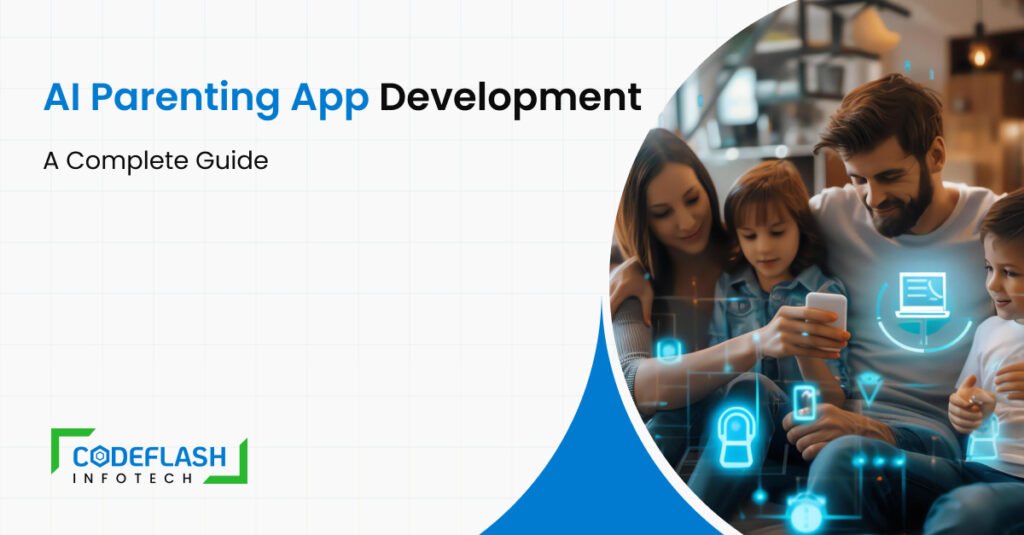
AI in Product Development: Use Cases, Benefits & Solutions
11 NOVEMBER
From concept to launch and beyond, AI for product development is revolutionizing how businesses build products and bring them to market. Start-ups employ it to iterate on ideas and grow faster. “And it’s used when companies are feeling squeezed to optimize or restructure operating segments, pare costs, and manage untidy portfolios.”
This is something tech leaders do all the time: creating processes that not only teach everything but also efficiently transfer this learning across generations of a product.
At its heart, AI comprises machine learning product design, predictive modelling, and generative models. Those capabilities drive AI use cases across products such as recommendation engines, forecast engines, and automated testing.
By using AI for product management, businesses can create more efficient roadmaps, automate decision-making, and eliminate manual process bottlenecks.
When incorporated into product development through MLOps, we anticipate these models to be scalable, trustworthy, and evolving (i.e., adaptive), leading to sustainable product innovation with AI.
What is AI in Product Development?
AI in product development means embedding artificial intelligence technologies across every stage of the product lifecycle. Instead of adding AI as a single feature, businesses now design entire workflows around intelligent systems.
Key highlights include:
- Using machine learning product design to analyze customer needs and forecast demand.
- Driving an AI-driven product lifecycle where feedback loops inform continuous improvement.
- Establish best-practice AI product engineering to enable products to scale.
As a result, companies produce products that evolve and are responsive to market needs and changes, and never lose value.

How does AI for Product Development Work?
Product development with AI operates by integrating data algorithms and processes operationally within a continuous cycle of innovation.
- Data as the Foundation
All AI-driven products are also built on data from sensors, customer feedback, and market signals. The use of AI is only as good as the quality of data being used to drive accurate use cases.
- Model Training and Intelligence
AI solutions learn from past and real-time data to spot trends, detect anomalies, and automate decisions. This forms the base of AI product engineering.
- Generative & Predictive Support
Generative AI quickly generates design variations and prototypes. Predictive analytics Blog testing, reduce risks, and fuel product innovation with AI.
- MLOps in Product Development
Product development MLOps integrates AI models into deployment, orchestration, and maintenance. It is what makes intelligence scalable and durable.
- Decision Automation
AI-powered product management Teams use AI to automate backlog prioritization, roadmap planning, and continuous optimisation for biz impact.
All of this is turning AI into less of a product innovation tool and more into something that perpetually innovates.
Key Components of AI in Product Development
- Data & Feature Engineering
AI is based on data in product development and accurate insights and predictions. Weapons of mass pipelines and feature engineering will result in robust AI product solutions.
- Machine Learning & Generative Models
Machine learning product design helps anticipate and personalize demand and experiences, as well as enhance usability. Generative AI is speeding up prototyping, making it truer than ever that product innovation with AI will actually be faster.
- AI Product Engineering & MLOps
MLOps in product development keeps models scalable, secure, and adaptable. It forms the core of AI product engineering, supporting sustainable AI-based product management.

Top Artificial Intelligence Use Cases in Product Development
AI is transforming product development from product ideas to post-launch product management. These AI applications demonstrate how startups, companies, and tech giants are using the best artificial intelligence technology to work more efficiently, reduce risk, or disrupt entire industries.
- Market Research & Trend Prediction
Artificial intelligence can be used to process data from sources such as customer preferences, competitor activity, and market trends. So that teams can anticipate the shifts in demand and seek new opportunities. So companies are turning to AI technologies for products earlier in the cycle.
- Idea Validation & Concept Testing
Machine learning models emulate results, predict adoption rates, and assess product-market fit without incurring significant risk. This reduces risk and helps startups place smarter bets. It speeds up the AI-based product development life cycle by allowing only the best ideas to pass through.
- Machine Learning Product Design
Software containing AI for creating various concepts of design and simulating user interaction. This allows for testing flip features and is faster than the usual setup. This kind of product design, enabled by machine learning, enables greater innovation in AI products.
- Product Engineering & Simulation
AI mimics stress tests, environmental exposure, and performance trade-offs in early development. It also minimizes design errors and production costs. Skin in the game: With AI product engineering, companies can avoid late-stage failures and improve reliability.
- Smart Testing & Quality Assurance
AI automatically tests code, detects bugs, and optimises code across all platforms. Predictive models help identify problems before deployment and minimize post-deployment defects. It enables more reliable thought processes throughout the AI-powered product lifecycle.
- AI-Based Product Management
The tools of AI help us track patterns in product usage, customer feedback, and market trends. They help automate backlog grooming, feature prioritization, and roadmap planning.
- Personalization & Customer Experience
Artificial Intelligence innovated by tailoring the product to each user’s personal preference. Such requires longer-term engagement, satisfaction, and loyalty. It is a powerful use case of artificial intelligence for customer retention.
- Post-Launch Monitoring & Support
Real-time AI platforms spot issues and predict maintenance. Releases and updates automatically include feedback loops. MLOps product development ensures accuracy and performance into the future.
Key Benefits of AI in Development
Business value from AI-driven product development includes faster releases and greater competitive positioning. Companies that implement AI across their product lifecycle reap these big benefits.
- Faster Time-to-Market
AI platforms track performance on the fly, alerting when systems begin to deviate from norms and predicting when parts might require maintenance. Feedback loops feed into updates and releases independently. Supported by MLOps in production models, this ensures long-term accuracy and reliability.
- Cost Efficiency
AI reduces the need for manual processes and testing redundancies, lowering development costs. It is hard-nosed to say that it’s important to conserve resources and work on the most important issues. Companies using AI products gain higher ROI with less risk.
- Improved Quality & Reliability
It can identify development weaknesses and poor performance early in development using predictive analytics. This leads to fewer incidents after the app shipped and more user confidence. The AI product life cycle tends to become more predictable.
- Scalable Product Innovation
AI enables rapid prototyping and continuous improvement at scale. Teams are free to try out more things without stalling release cadences. This is to ensure product innovation with AI continues to be a competitive edge.
- Smarter Decision-Making
By using AI in product management, leaders can make data-driven decisions rather than guess. Feature, budget, and schedule decisions are clearer. It aligns with business outcomes and customer value.
- Competitive Differentiation
Organizations relying on AI product engineering build smart, responsive products. These offerings differentiate themselves in crowded markets by iterating more quickly than conventional options. It is the one defensible advantage in innovation.

AI Implementation Strategies for Product Development
Successfully adopting AI is about more than throwing algorithms at a wall; it’s about organization and transparency. Companies need to connect their data, people, and tech so AI can be refined. These AI development approaches are paving the way to truly intelligent products.
- Assess Organizational Readiness
Organizations also need to evaluate their current data infrastructure, tools, and staff capabilities before implementing AI. Strengths and Limitations of the report. A what-if analysis clears the way for a smooth introduction of AI in product creation.
- Define Use Cases & Value Goals
One tightly focused, high-voltage one, not a wide one. The task for businesses is to figure out where AI does the easy stuff, and (in the immediate term), the ROI is likely scaled. So, when we make sure the right use case is solved first, then we avoid waste.
- Data Strategy & Governance
AI models are only as strong as the data that fuels them, so we need governance. Machine setup, safe storage, and processing ensure results are trusted. An effective data strategy is critical to product-driven AI solutions.
- Technology Stack & Infrastructure
Scaling depends on selecting the right platforms, frameworks, and deployment architecture. Using cloud-native tools and APIs, there is already less hassle in integrating them and more flexibility. These decisions directly impact the success of AI product engineering.

Challenges in AI Adoption
Benefits aside, implementing AI is not without its challenges. Firms should anticipate these challenges in good time and plan for them. But solving these challenges is the only sustainable way to integrate AI into product lifecycles.
- Data Quality & Availability
Weak model performance comes from a bad or incomplete data structure. A lack of trustworthy sources makes machine learning product design inaccurate and incoherent. The creation of governance frameworks facilitates the maturity and reliability of AI results.
- Talent Shortage & Skills Gap
Depending on the kind of organization you are, it is likely that you have no skilled data scientists, developers, or MLOps professionals. This lack of resources hinders, and external support must also be relied upon. Closing the skills gap is fundamental to scaling AI product engineering.
- Integration Complexity
AI does not easily plug into “legacy” systems, and so there is often frustration and delay built in. Middleware and APIs do a lot to smooth the transition between old and new technologies. Facilitating integration is key to accelerating the AI-powered product lifecycle.
- High Initial Investment
AI demands huge initial investments in data platforms, infrastructure, and skills. But the cost-benefit, in fact, of efficiency and accuracy, and differentiation, is worth it. Enterprises view this as a strategic bet on AI-driven product innovation.
Measuring Success in AI Product Development
Companies need quantifiable milestones to prove AI’s value. The performance tracking for AI in product development will maintain this business-driven approach.
- Time-to-Market Metrics
Track how AI is accelerating design, testing, and time-to-market. Accelerating development and time-to-market provides a competitive advantage. The end products of AI are also reaching the market much faster.
- Cost Savings & Efficiency
Measure savings in test-time, manual, and development costs. It is very plain evident from these savings that AI in construction has value. There are now cost-tied metrics to illustrate that AI can be successfully delivered in the long run.
- Product Quality & Reliability
Care less about unit tests and more about how few bugs they have, how many performance issues it doesn’t create, and ultimately if the users like using your product. Issues are caught earlier, and that results in better releases. These findings validate the existence of the AI product lifecycle.
- Innovation & Market Differentiation
Monitor the volume of new functionalities and customer take-up. Frequent innovation signals competitive strength. This is AI product engineering in action.
- Business Impact & Growth
Connect AI results to revenue, market share, or customer retention. Concrete business growth shows the real ROI from implementing AI. These are metrics that argue in favour of AI product management.
Why Choose Codeflash Infotech for AI Product Development?
Ready to bring your idea to life?
Contact us today to discuss your AI product development go We build large-scale products that change the way people work and live. We are specialists who bring together expertise in AI product engineering, MLOps in product development, and production-grade machine learning to achieve results that count.
We work on AI innovations for products and help innovation teams deliver at a blistering pace, with trust in reliability, security, and cost-efficiency. If you are a startup testing ideas or an enterprise expanding large portfolios, we can develop strategies customized to your needs.
With deep specialization in AI-based product management, Codeflash Infotech helps companies become more competitive through efficiency improvements, speed up time-to-market, and deliver outstanding smart products.
als and transform your concept into a best-in-class solution.
Conclusion
In product development Guide, A.I. is no longer a nice-to-have but a must-have to compete. It is uplifting from proof of concept through to maintenance after launch. AI use cases enable companies to create, think & operate intelligently and cost-effectively.
The future is for businesses that will rely on AI product engineering and efficient AI implementation strategies with MLOps in their product development. With the right partner, AI isn’t technology; it’s your innovation engine.

Frequently Asked Questions
Fast time-to-market, lower costs, greater reliability, and more informed decision-making are the primary benefits of integrating AI into development. It enables mass AI product innovation.
MLOps for product development controls model deployment, monitoring, and retraining. It’s what maintains AI solutions’ accuracy, reliability, and scalability over time.
Yes, for startups, AI solutions for products help validate ideas fast and mitigate risk. It enables them to scale more quickly without spending a lot on resources.
Codeflash Infotech offers AI product management and AI product engineering under one roof. We create Crafted methodologies that drive measurable business value and sustained competitive advantage.
AI in knowledge management enables organizations to capture, organize, and retrieve information efficiently. It automates data classification, improves search accuracy, and delivers personalized insights for teams. By integrating AI in Knowledge Management, businesses can enhance collaboration, reduce redundancy, and make smarter, faster decisions across projects.
Table of Content
What is AI in Product Development?
How does AI for Product Development Work?
Key Components of AI in Product Development
Top Artificial Intelligence Use Cases in Product Development
Key Benefits of AI in Development
AI Implementation Strategies for Product Development
Measuring Success in AI Product Development




